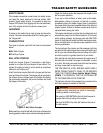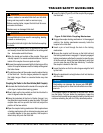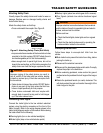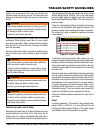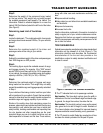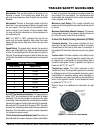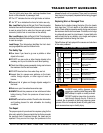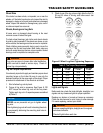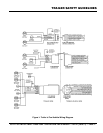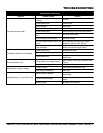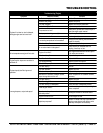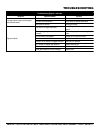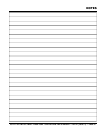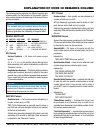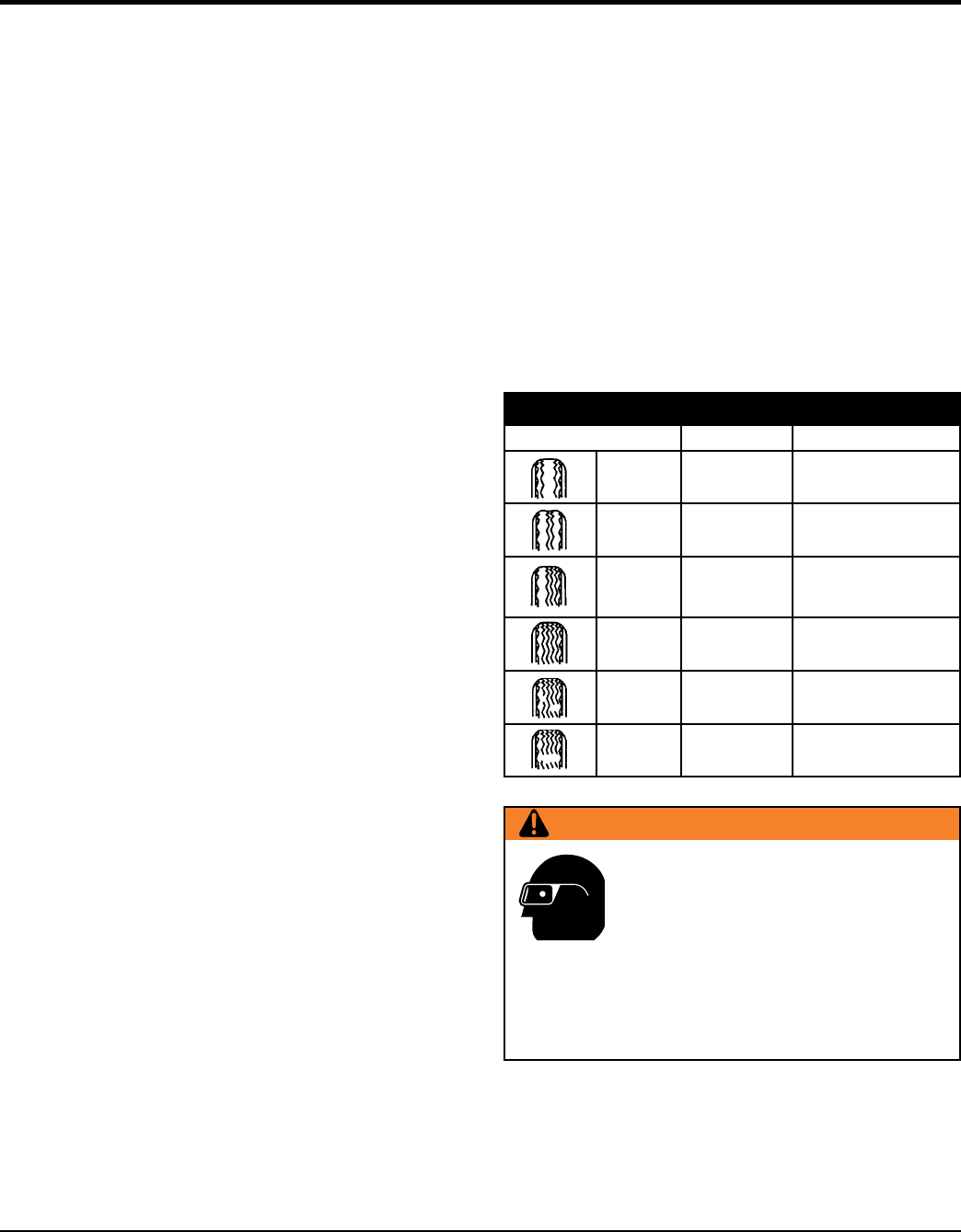
QP4TZT10P/TMP16F/TMPXF TRASH PUMP • OPERATION & PARTS MANUAL — REV. #1 (08/29/11) — PAGE 39
Tires for light trucks have other markings besides those
found on the sidewalls of passenger tires.
LT: The “LT” indicates the tire is for light trucks or trailers.
ST: An “ST” is an indication the tire is for trailer use only.
Max. Load Dual kg (lbs) at kPa (psi) Cold: This information
indicates the maximum load and tire pressure when the tire
is used as a dual, that is, when four tires are put on each
rear axle (a total of six or more tires on the vehicle).
Max. Load Single kg (lbs) at kPa (psi) Cold: This information
indicates the maximum load and tire pressure when the tire
is used as a single.
Load Range: This information identifi es the tire’s load-
carrying capabilities and its infl ation limits.
Tire Safety Tips
Slow down if you have to go over a pothole or other
object in the road.
DO NOT run over curbs or other foreign objects in the
roadway, and try not to strike the curb when parking.
Check tire infl ation pressure weekly during use to insure
the maximum tire life and tread wear.
DO NOT bleed air from tires when they are hot.
Inspect tires for uneven wear patterns on the tread,
cracks, foreign objects, or other signs of wear or
trauma.
Remove bits of glass and foreign objects wedged in
the tread.
Make sure your tire valves have valve caps.
ALWAYS check tire pressure on tow vehicle and trailer
before towing. Check tire pressure at least once a
month.
DO NOT overload tow vehicle. Check the tire information
and loading placard for safe allowable tire loading
conditions.
Tire Repair
The proper repair of a punctured tire requires a plug for the
hole and a patch for the area inside the tire that surrounds
the puncture hole. Punctures through the tread can be
repaired if they are not too large, but punctures to the
sidewall should not be repaired. Tires must be removed
from the rim to be properly inspected before being plugged
and patched.
Replacing Worn or Damaged Tires
Replace the tire before towing the trailer if the tire treads
have less than 1/16 inch depth or the telltale bands are
visible. Check infl ation pressure weekly during use to insure
the maximum tire life and tread wear. A bubble, cut or bulge
in a side wall can result in a tire blowout. Inspect both side
walls of each tire for any bubble, cut or bulge; and replace
a damaged tire before towing the trailer.
Table B below will help pinpoint the causes and solutions
of tire wear problems.
Table B. Tire Wear Troubleshooting
Wear Pattern Cause Solution
Center Wear Over infl ation.
Adjust pressure to particular
load per tire manufacturer.
Edge Wear Under infl ation.
Adjust pressure to particular
load per tire manufacturer.
Side Wear
Loss of camber
or overloading.
Make sure load does not
exceed axle rating.
Align wheels.
Toe Wear Incorrect toe-in. Align wheels.
Cupping Out-of-balance.
Check bearing adjustment
and balance tires.
Flat Spots
Wheel lockup and
tire skidding.
Avoid sudden stops when
possible and adjust brakes.
WARNING
ALWAYS wear safety glasses when
removing or installing force fi tted parts. DO
NOT attempt to repair or modify a wheel.
DO NOT install an inner-tube to correct a
leak through through the rim. If the rim is
cracked, the air pressure in the inner tube may cause
pieces of the rim to explode (break off) with great force
and cause serious eye or bodily injury.
TRAILER SAFETY GUIDELINES



